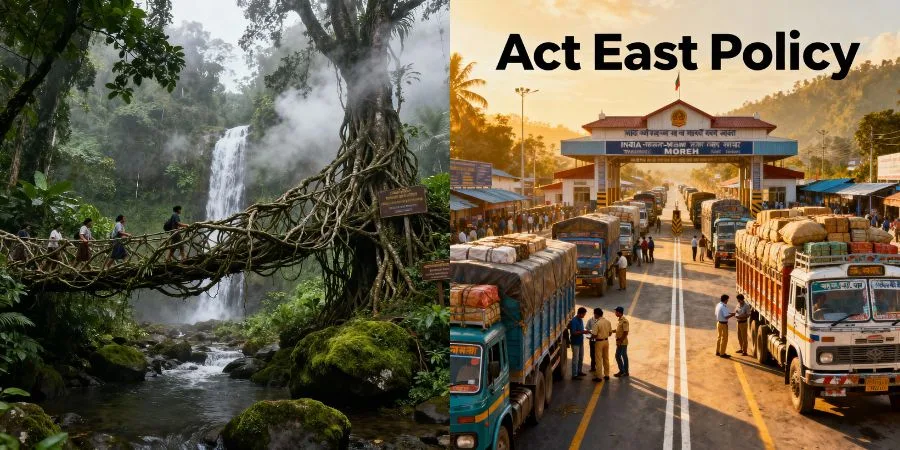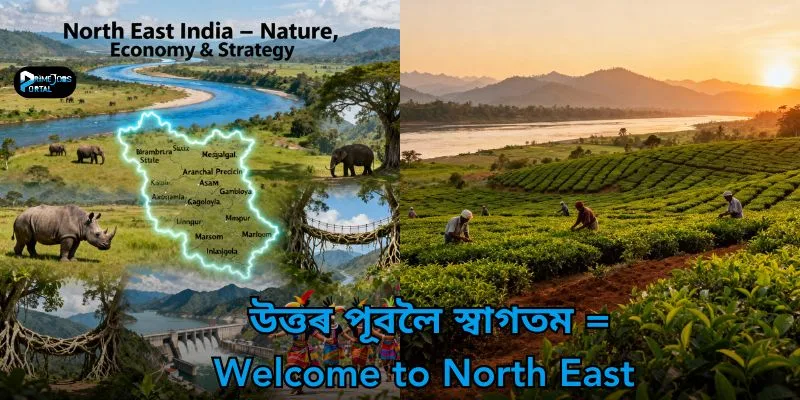Explore the geography, nature, and strategic importance of North East India. Learn how the ‘Six Sister States’ shape India’s economy and key decisions.
North East India: Geography, Nature, and Their Crucial Role in India’s Economy
North East India, often called as the ‘Six Sister States,’ is a treasure trove of nature, unique geography, and incredible diversity. Yet, many overlook its vital role in shaping India’s economic growth, strategic decisions, and environmental policies. Curious about why this region matters so much? Dive in for a 360° view of what makes the North Eastern states not just enchanting, but essential for a progressive India.
Unveiling the North Eastern Sister States
Located at the easternmost frontier, the North East India region comprises Arunachal Pradesh, Assam, Manipur, Meghalaya, Mizoram, and Nagaland. Known as the “Six Sisters” (before Sikkim was considered a part), these states are united by history, geography, and culture but each boasts its own distinct identity.
Key Geographic Features of North East India
- The region is bordered by Bhutan, China, Myanmar, and Bangladesh, providing India a strategic position in South Asia.
- The mighty Brahmaputra River unfurls across Assam, creating fertile plains and unique floodplains.
- Dense forests, rolling hills, and valleys dominate states such as Meghalaya and Arunachal Pradesh.
Nature’s Bounty: Ecology and Biodiversity
- North East India holds about one-third of the country’s biodiversity.
- Enchanting forests of Kaziranga and Manas (Assam) shelter tigers, elephants, and the one-horned rhinoceros.
- Meghalaya’s cloud forests and living root bridges exemplify sustainable interaction with nature.
- Mizoram and Nagaland are home to vibrant wildlife sanctuaries and rare orchids.
Top Environmental Highlights
- Over 60% of the land cover is forest, making it one of the greenest regions in India.
- Rich in endemic flora and fauna, it is recognized as a global biodiversity hotspot.
- The area receives some of the heaviest rainfall globally Mawsynram in Meghalaya holds the world record.
Economic Significance: How the Landscape Fuels Growth
- The geography of North Eastern states directly impacts India’s economy and development strategies.
Natural Resources
- The region is a powerhouse for hydroelectricity thanks to fast-flowing rivers.
- Assam’s vast tea gardens produce about 50% of India’s total tea, driving domestic and export markets.
- Abundant reserves of oil, natural gas, coal, and limestone fuel industrial growth.
Agricultural Contributions
- Fertile Brahmaputra and Barak valleys encourage rice, jute, and horticultural farming.
- Organic produce pineapples, oranges, spices gain both national and international demand.
Border Trade and Act East Policy
- Proximity to Southeast Asia underpins the government’s “Act East” policy to foster trade and diplomatic ties.
- Border towns and trading hubs (like Moreh in Manipur) serve as gateways for international commerce.
Strategic and Geopolitical Importance
- North Eastern states share a 4,500+ km international border much longer than India’s boundary with mainland neighbors.
- This region acts as India’s buffer zone with China, Myanmar, and Bangladesh.
- National highways and railways are expanding to ensure quick military and economic mobilization.
- Geopolitical developments here directly influence India’s foreign policy and security decisions.
Cultural Tapestry: Diversity and Heritage of North East India
- The Six Sisters are an intricate mosaic of indigenous cultures, languages, and festivals.
- Over 200 ethnic groups enrich the region with music, dance, crafts, and cuisines.
- Festivals such as Bihu (Assam), Hornbill (Nagaland), and Chapchar Kut (Mizoram) foster unity and tourism growth.
- English is widely spoken, while each state preserves its native languages and dialects.
How The Landscape Influences Decisions and Development

Environmental Challenges and Policy Responses
- Frequent floods and landslides prompt innovative disaster management and infrastructure planning.
- Protecting biodiversity drives India’s global commitments on climate change and sustainable development.
- Investment in eco-tourism supports both conservation and local economies.
Infrastructure and Connectivity
- The region’s rough terrain and dense forests present challenges for roads and communication.
- Flagship projects like the Trans-Arunachal Highway and Bogibeel Bridge in Assam symbolize connectivity drives.
- Enhanced links enable better access for defense, trade, and emergency response.
Social and Economic Inclusivity
- Special development programs aim to bridge gaps due to geographic isolation.
- Initiatives in education, healthcare, and skill development target youth and marginalized communities.
The North East India Economy mainly depends on:
- Tea, oil, coal, and bamboo-based industries provide substantial employment.
- Tourism revenues surge with eco-adventure, heritage, and cultural tourism.
- Software IT parks in Guwahati and Shillong mark the region’s digital integration.
Key Figures
- Annual tea exports: Over 200 million kg.
- Forest coverage: More than 160,000 sq. km over 63% area.
- Hydropower potential: Estimated at 60,000 MW.
Why North East India Matters for the Country
Economic Gateway and Growth Engine
- Fueling the Indian economy through export-driven agriculture and border trade.
- Hydropower resources help meet national energy requirements sustainably.
- Cross-border trade alliances multiply economic prospects for the entire country.
Strategic Shield
- Serves as India’s sentry against external threats and illegal border activities.
- Critical for maintaining national security, disaster readiness, and defense logistics.
Catalyst for Policy Innovation
- Drives India’s policies for sustainable development, biodiversity protection, and ethnic harmony.
- Lessons from the North East inspire water resource management and green technology adoption nationwide.
Practical Insights: Takeaways for Decision-Makers and Citizens
- Strengthening infrastructure can unlock the region’s full economic and strategic potential.
- Focusing on eco-friendly policies ensures preservation of irreplaceable natural resources.
- Encouraging intentional tourism, cultural exchange, and entrepreneurship will yield mutually beneficial growth.
Conclusion: North East India is Green Lung and Strategic Keystone
- The North Eastern states are much more than just picturesque destinations; they are India’s powerhouse for economic growth, ecological balance, and strategic security.
- Understanding, protecting, and investing in the North East India is not just a necessity but a responsibility for every Indian.
- For policymakers, travelers, and business leaders, the ‘Six Sister States’ offer lessons and opportunities that could shape India’s future.








